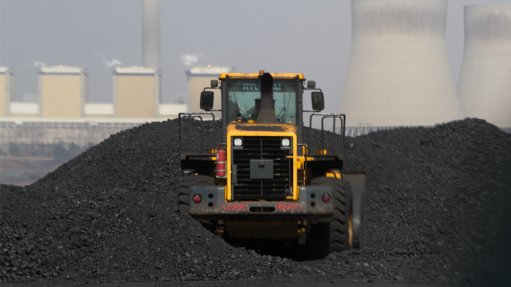
Photo by: Duane Daws
PERTH (miningweekly.com) – Geoscience Australia’s snapshot of the nation's energy resources has reaffirmed Australia’s abundance of world class energy resources and role as a globally significant energy commodity producer, with energy export earnings contributing more than A$130-billion to the economy and about 85% of its produced energy commodities exported.
In its inaugural 'Australia’s Energy Commodity Resources' (AECR) publication, Geoscience Australia noted that Australia has the number one identified economic energy resources and is the third largest producer of uranium, while also having the second highest identified economic energy resources of brown coal and fourth highest of black coal.
Furthermore, Australia is also the world’s largest exporter of metallurgical coal and second largest exporter of thermal coal.
“Around 85% of our produced energy commodities are exported and as of 2019, Australia was the fourth largest exporter of energy in the world,” Minister for Resources, Water and Northern Australia Keith Pitt said.
“We surpassed Qatar to become the world’s largest exporter of liquefied natural gas and during this period, Australia's energy export earnings contributed over A$130-billion to our economy.
“AECR assesses Australia’s energy commodity reserves and resources, and highlights our abundant and available geological energy resource base. It includes 963-million barrels of oil, 241-trillion cubic feet of natural gas, 411-billion tonnes of coal and 1.2-million tonnes of uranium.
“These abundant and diverse geological resources will maintain Australia’s future value to the global energy market, building on the significant economic and social benefits Australia and its people have attained over the last two decades.
“In 2019, our coal and petroleum industries employed 80 000 people, the majority of which are based in regional Australia.”
Pitt said the Australian government wants to ensure that Australians have a reliable and affordable energy supply for generations to come.
“As Australia looks to the future, AECR also provides an overview of how our geology may support hydrogen production and carbon capture and storage technology. This supports the six new carbon capture projects announced earlier this month under the government’s A$50-million carbon capture, use and storage (CCUS) Development Fund, demonstrating the government ‘s commitment to supporting the commercial deployment of CCUS and its uptake,” he said.
“This snapshot of the nation's energy resources, alongside Geoscience Australia’s annual assessment of mineral commodities in Australia’s Identified Mineral Resources, offers a complete picture of Australia’s energy and mineral resources for industry and policy makers.
"AECR is well timed in the wake of the Covid-19 pandemic as it captures data from 2018 to 2019, providing a baseline to measure the impact of Covid-19 on the industry and monitor its recovery.
“Updated annually, this in-depth look at Australia’s recoverable energy resources will provide essential data to ensure the nation remains at the forefront of reliable energy exploration, production, supply and trade into the future."